Browse in the Library:
| Artist or Composer / Score name | Cover | List of Contents |
|---|---|---|
| (500) Days Of Summer Piano Theme ( Mychael Danna, Rob Simonsen) | (500) Days Of Summer Piano Theme ( Mychael Danna, Rob Simonsen) | |
| 10,000 Maniacs Because The Night Piano Solo sheet music |
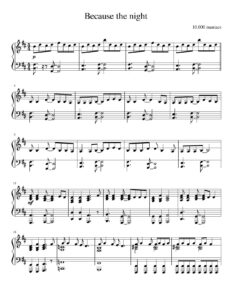 |
|
| 100 Golden Standards The World’s Best Piano Arrangements by the greatest pianists of the Century |
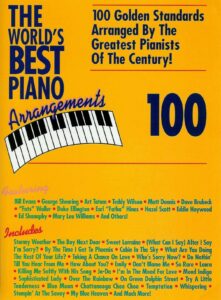 |
The World’s Best Piano Arrangements |
| 100 Great Keyboard Intros Songbook |
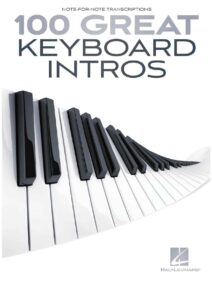 |
100 Great Keyboard Intros Songbook |
| 100 Greatest Film Scores (Book) by Matt Lawson & Laurence E. MacDonald |
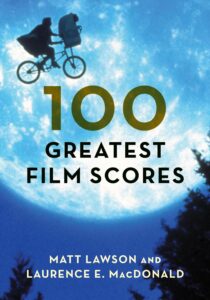 |
|
| 100 greatest POP songs |
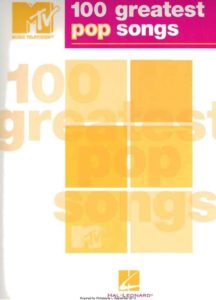 |
100 greats pop songs |
| 100 Greatest Songs of Rock & Roll, Selections From Piano Vocal Guitar Sheet Music |
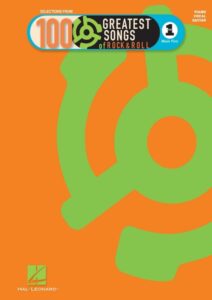 |
100 Greatest Songs of Rock & Roll, Selections From Piano Vocal Guitar Sheet Music |
| 100 Hits Simply The Best – Guitar (Die besten Songs aus Pop Rock) German |
 |
100 Hits Simply The Best (Die besten Songs aus Pop |
| 100 Jazz & Blues Greats Book |
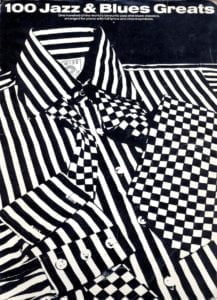 |
100 Jazz & Blues Greats |
| 100 Jazz Solos & Etudes by Jacob Wise |
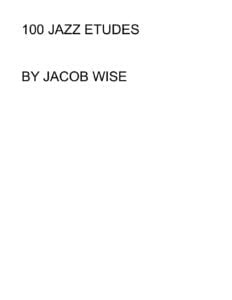 |
100 Jazz solos |
| 100 Light Classics For Piano Solo |
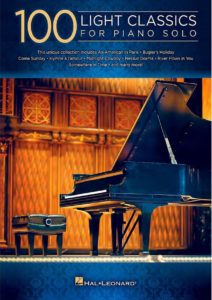 |
100 Light Classics For Piano Solo |
| 100 Most Beautiful Christmas Songs Easy Piano Vocal |
 |
100 Most Beautiful Christmas Songs Easy Piano Vocal |
| 100 Most Beautiful Christmas Songs Piano Vocal Guitar |
 |
100 Most Beautiful Christmas Songs Piano Vocal Guitar |
| 100 Must-Know Jazz Tunes with MP3 audio tracks to Play Along |
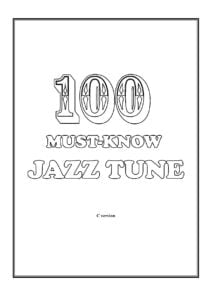 |
100 Must-Know Jazz Tune – C version |
| 100 of the Best Movie Songs Ever! Piano Vocal Guitar |
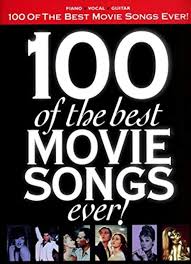 |
100 best movie songs 1&100 best movie songs 2 |
| 100 Of The Best Songs Ever For The Keyboard by Daniel Scott |
 |
100 Of The Best Songs Ever For The Keyboard |
| 100 Piano Solos (100 popular standards of today arr. by Frank Booth) with guitar chords |
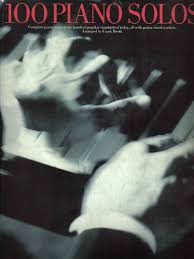 |
100 piano solos 1 |
| 100 Pop Hits Of The 90’s by Dan Coates |
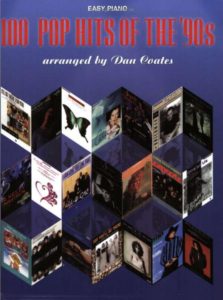 |
100 Pop Hits Of The 90’s by Dan Coates |
| 100 Rock N Roll Standards Piano Vocal Guitar chords |
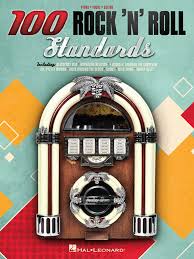 |
100 Rock N Roll Standards Piano Vocal Guitar chords contents |
| 100 Songs For Kids – Easy Guitar Lyrics with Tablature |
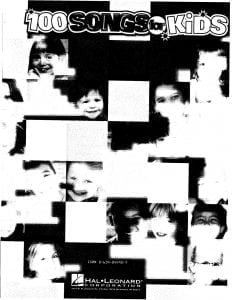 |
100 Songs For Kids – Easy Guitar Lyrics |
| 100 Tunes Every Musician Should Know Professional Chord Changes And Substitutions By Dick Hyman |
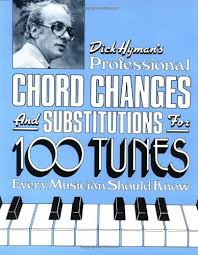 |
100 Tunes Every Musician Should Know Professional Chord Changes And Substitutions By Dick Hyman |
| 100 Ultimate Blues Riffs For Piano Keyboards |
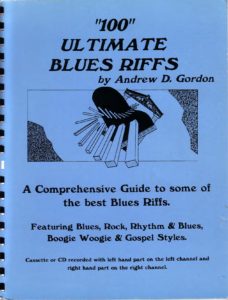 |
100 ultimate riffs jazz piano |
| 100 Women Of Pop And Rock 100 songs by 100 artists |
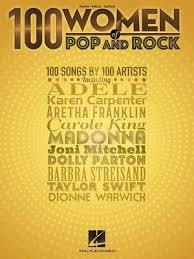 |
100 Women Of Pop And Rock 100 songs by 100 artists Piano Vocal Guitaral Leonard |
| 100 Years Of Popular Music 1980s Part Two Piano Vocal Guitar Chords |
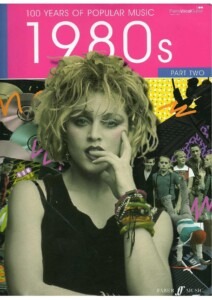 |
100 Years Of Popular Music 1980s Part Two Piano Vocal Guitar Chords |
| 1000 Examples of Musical Dictation (Ladukhin, Nikolay) | 1000 Examples of Musical Dictation | |
| 1000 Words – Final Fantasy X-2.mscz | ||
| 1001 Blues Licks by Toby Wine – Piano |
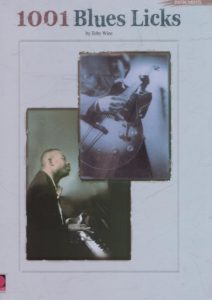 |
1001 Blues Licks by Toby Wine – Piano |
| 1001 Jazz Licks A Complete Jazz Vocabulary For The Improvising Musician (Jack Shneidman) |
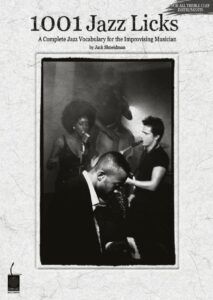 |
1001 Jazz Licks A Complete Jazz Vocabulary For The Improvising Musician (Jack Shneidman) |
| 101 Cançoes Que Tocaram O Brasil Nelson Motta (Book) (Brazilian Portuguese) |
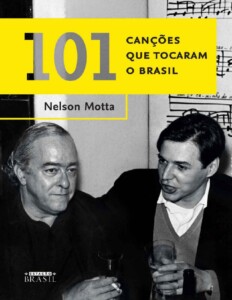 |
|
| 101 Frank Sinatra Hits For Buskers |
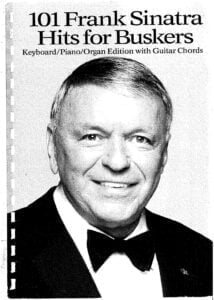 |
101 Frank Sinatra Hits For Buskers |
| 101 Mississippi Delta Blues Fingerpicking Licks Guitar and TAB by Larry McCabe |
 |
Larry McCabe – 101 Mississippi Delta Blues Fingerpicking Licks |
| 101 Must-Know Blues Licks (Guitar Educational) (Wolf Marshall) PDF + MP3 audio tracks Play Along with Tablature |
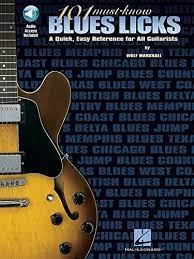 |
101 Must-Know Blues Licks (Guitar Educational) (Wolf Marshall) |
| 1015 Songs – The Original Musicians’s (Musicals) |
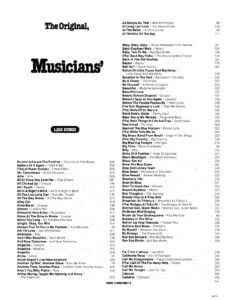 |
1015 Songs – The Original, Musicians’s (Musicals) |
| 106 Songs Everybody Plays |
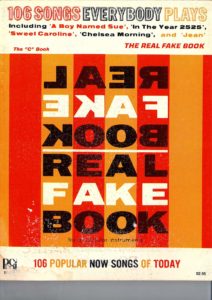 |
106 Songs Everybody Plays |
| 11 Short Classical Piano Pieces |
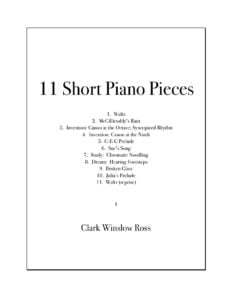 |
11 Short Classical Piano Pieces |
| 116 Arrangements Of Baroque, Classical & Ballet Pieces For Piano Solo |
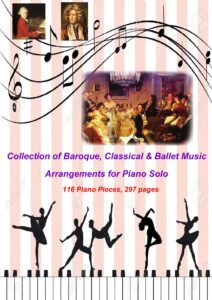 |
116 Arrangements Of Baroque, Classical & Ballet Pieces For Piano Solo |
| 129 Easy Pieces For Piano Solo, also for beginners |
 |
129 easy pieces for piano solo |
| 12th Street RAG – Liberace Collection Book of 5 compositions |
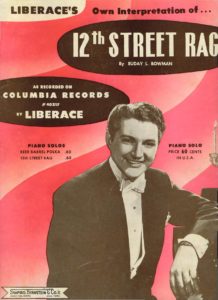 |
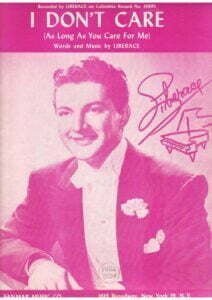 |
| 12th Street Rag by Euday Bowman (Piano Solo sheet music, Noten, partition, partitura, spartito).mscz | ||
| 150 Best Songs For Acoustic Guitar |
 |
150 Best Songs For Acoustic Guitar |
| 150 More Of The Most Beautiful Songs Ever (Songbook) Piano Vocal Guitar |
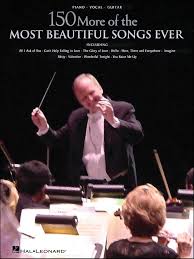 |
150 More Of The Most Beautiful Songs Ever (Songbook) Piano Vocal Guitar |
| 150 Of The Best Jazz Standards Ever |
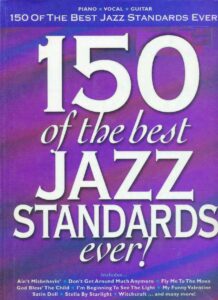 |
150 Of The Best Jazz Standards Ever |
| 150 Of The Most Beautiful Songs Ever 3rd Edition |
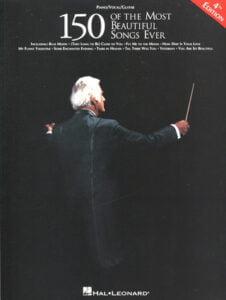 |
150 Of The Most Beautiful Songs Ever 3rd Edit1 and 150 Of The Most Beautiful Songs Ever 3rd Edit2 |
| 16 Pop and Movies Hits Keyboard Piano Book (Mike Emerson) |
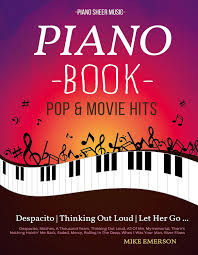 |
16 Pop and Movies Hits Keyboard Piano Book (Mike Emerson) |
| 1600 Pennsylvania Avenue The Musical By Leonard Bernstein And Alan Jay Lerner Vocal Selections |
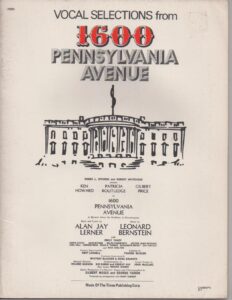 |
|
| 17 Moments of Spring – Mgnovenia (Mikael Tariverdiev) | ||
| 1812 Overture Op. 49 Thaikovsky (arr. piano solo) |
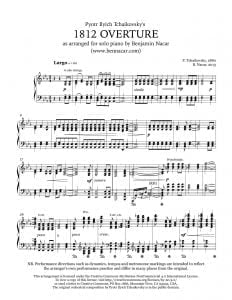 |
|
| 1950s Jazz (Fake Book lead sheet music) |
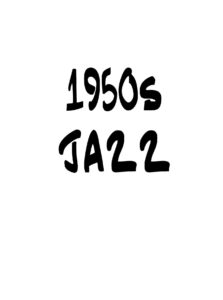 |
1950s Jazz (Fake Book lead sheet music) |
| 20 Century Fox Theme Transcription By Deusde Coppen |
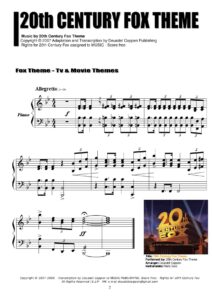 |
|
| 20 Modern BEBOP Licks – by Noah Kellman All Keys with left hands chords |
 |
20 Modern BEBOP Licks – by Noah Kellman All Keys with left hands chords |
| 200 Jazz Standards Tunes (chords progressions for C Instruments) Bob Taylor |
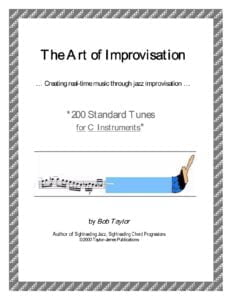 |
200 Jazz Standards Tunes (chords progressions for C Instruments) Bob Taylor |
| 200 Of The Best Songs From Jazz Of The ’50s | jazz of the 50s | |
| 2014 Top Hits Of 2014 Songbook Piano Vocal Guitar |
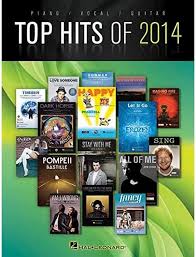 |
2014 Top Hits Of 2014 Songbook Piano Vocal Guitar |
| 2016 Top Hits Of 2016 Songbook Piano Vocal Guitar |
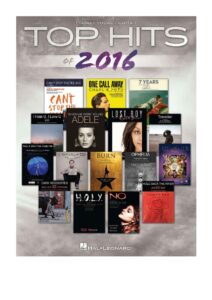 |
2016 Top Hits Of 2016 Songbook Piano Vocal Guitar |
| 2018 Greatest Pop Movie Hits Songbook For Piano |
 |
2018 Greatest Pop Movie Hits Songbook For Piano |
| 2019 GREATEST POP MOVIE HITS SONGBOOK FOR PIANO PART 2 Piano sheet music (Jim Presley) |
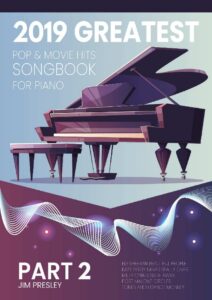 |
2019 GREATEST POP MOVIE HITS SONGBOOK FOR PIANO PART 2 Piano sheet music (Jim Presley) |
| 2020 Greatest Pop Piano Sheet Music Book Songbooks For Piano |
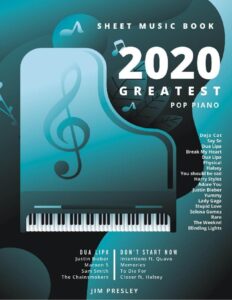 |
2020 Greatest Pop Piano Sheet Music Book Songbooks For Piano |
| 20th Century Classics Volume 1 |
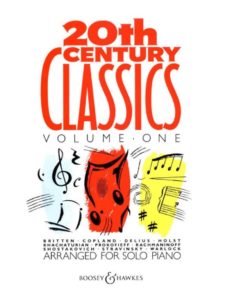 |
20th Century Classics Volume 1 |
| 20th Century Jazz Guitar by Richie Zellon (with Tablature) |
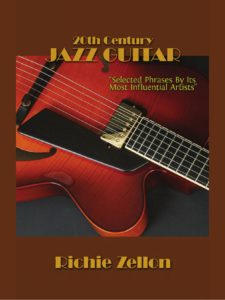 |
20th Century Jazz Guitar by Richie Zellon |
| 20th Century Masters Of Fingerstyle Guitar by John Stropes |
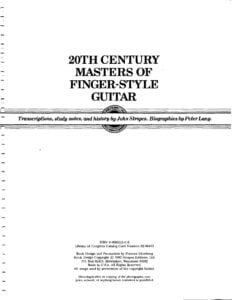 |
20th Century Masters Of Fingerstyle Guitar by John Stropes |
| 20th Century Piano Music – Book (1990) David Burge |
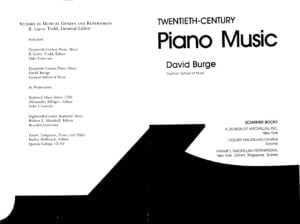 |
20th Century Piano Music Book (1990) David Burge |
| 220 Chromatic Exercises 1165 Jazz Lines Phrases For The Modern Improviser by Olegario Díaz |
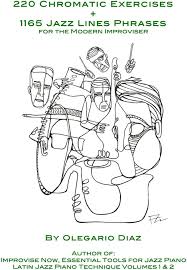 |
|
| 24 Etudes Op.35 – Fernando Sor (1778 – 1839) (Musescore File).mscz | ||
| 24_Preludes_Op.34 Shostakovich.mscz | ||
| 25 Short Classical Guitar Pieces (with Tablature) |
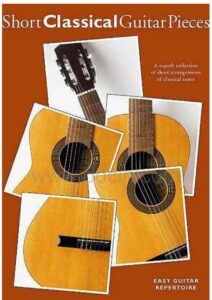 |
25 Short Classical Guitar Pieces |
| 262 Classic Piano Rags Various Composers |
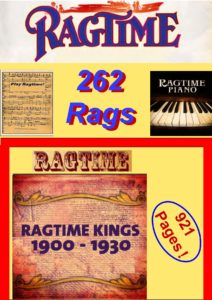 |
262 Classic Piano Rags Various Composers |
| 273 Easy And Intermediate Piano Pieces |
 |
273 Easy And Intermediate Piano Pieces contents |
| 28 Modern Jazz Trumpet Solos Book 2 |
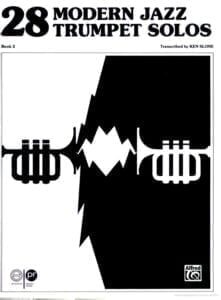 |
28 Modern Jazz Trumpet Solos Book 2 |
| 3.10 to Yuma (Marco Beltrami) | ||
| 30 Best Rock Guitar Songs Ever (Guitar TABs) |
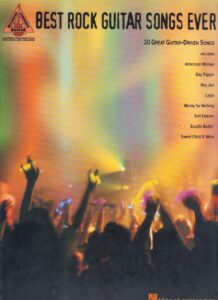 |
30 Best Rock Guitar Songs Ever (Guitar TABs) |
| 300 Sacred Songs Melody Lyrics Chords Fake Book Melody Lyrics Chords |
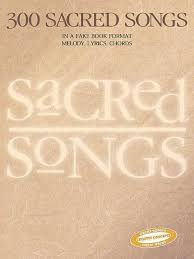 |
300 Sacred Songs Melody Lyrics Chords Fake Book Melody Lyrics Chords_compressed |
| 36 Christmas Carols Songs |
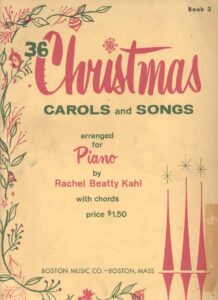 |
36 christmas carols songs |
| 38 Special Guitar Anthology Guitar Recorded Vers. with Tablature |
 |
38 special guitar anthology |
| 39 Progressive Solos For Classical Guitar (with Tablature) |
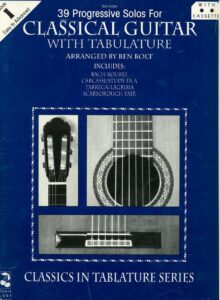 |
39 Progressive Solos For Classical Guitar |
| 39 Progressive Solos For Classical Guitar Book 2 (with Tablature) |
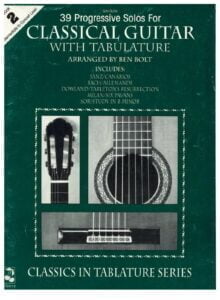 |
39 Progressive Solos For Classical Guitar Book 2 sheet music pdf |
| 40 Easy Guitar Pieces (Painted with the Sound) |
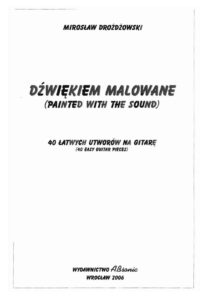 |
|
| 49 Most Popular Jazz Songs |
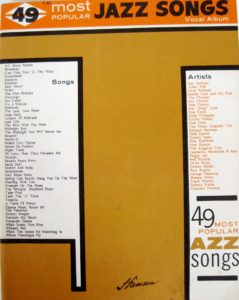 |
49 Most Popular Jazz Songs |
| 5 Christmas Songs Sheet Music Trumpet in B & Piano accompaniment (Viktor Dick) | 5 Christmas Songs Sheet Music Trumpet in B & Piano accompaniement (Viktor Dick) | |
| 50 Broadway Shows 50 Broadway Songs |
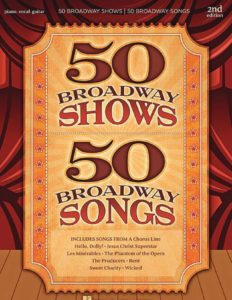 |
50 Broadway Shows 50 Broadway Songs |
| 50 Classical Guitar Solos In Tablature (Howard Wallach) with Tablature |
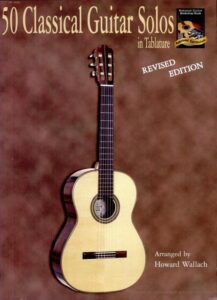 |
50 Classical Guitar Solos In Tablature (Howard Wallach) |
| 50 Essential Bebop Heads Arranged For Guitar Tablature (best lines Charlie Parker, Dizzy Gillespie, Thelonious Monk and more) |
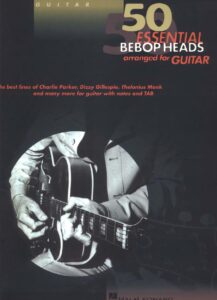 |
50 Essential Bebop Heads Arranged For Guitar Tablature (best lines Charlie Parker, Dizzy Gillespie, Thelonious Monk and more) |
| 50 Jazz Standards Every Jazz Musician Needs To Know with MP3 audio tracks to Play Along |
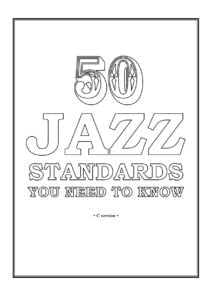 |
50 Jazz Standards Every Jazz Musician Needs To Know – C version |
| 50 Major II V I Phrases in all 12 keys by Chad Lefkowitz-Brown |
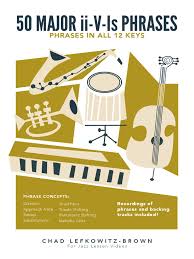 |
|
| 50 Most Popular Classical Melodies (Easy Piano) |
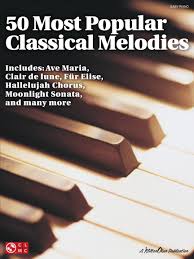 |
50 Most Popular Classical Melodies |
| 50 Of The Most Beautiful Piano Love Songs Solos Ever. |
 |
50 OF THE MOST BEAUTIFUL PIANO LOVE SONGS SOLOS EVER |
| 50 Piano Arrangements Of Hymns And Gospel Songs (Fred Bock’s Best) |
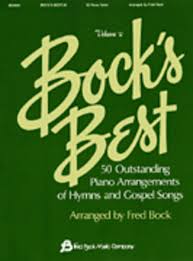 |
50 Piano Arrangements Of Hymns sheet music |
| 50 Piano Classics – Easy |
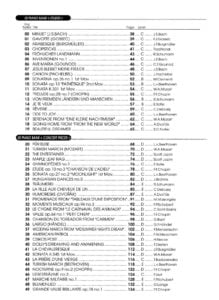 |
50 piano classics |
| 50 Riffs For Blues Guitar – Martin Shellard with MP3 audio to Play Along with Tablature |
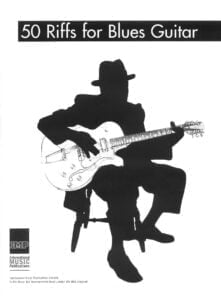 |
50 riffs for blues guitar |
| 500 Piano Intros For The Great Standards – Steinway |
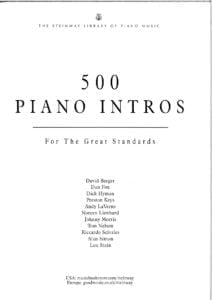 |
500 piano intros |
| 55 Country Classics (Voice, piano, Guitar) |
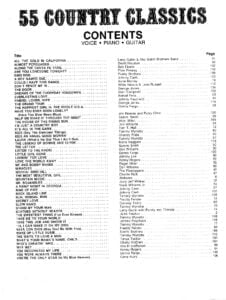 |
55 Country Classics (Voice, piano, Guitar) |
| 557 Jazz Standards (Sheet Music – in C for all instruments) swing to bop (lead sheet) |
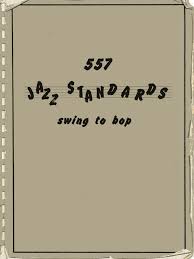 |
Standards (Sheet Music – Piano) |
| 60 Progressive Solos For Classical Guitar By Mark Phillips (with Tablature) |
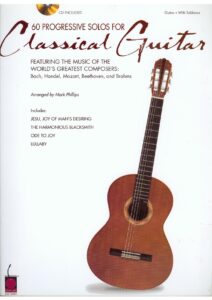 |
|
| 67 Fun Songs arranged by Jon Schmidt (Piano) |
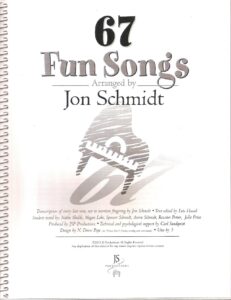 |
|
| 70’s Hits (Easy Piano Solos) – Hans-Gunter Heumann [Piano, Vocal, Chords] |
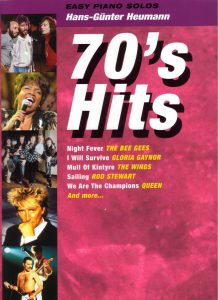 |
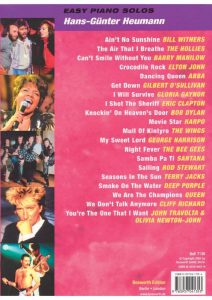 |
| 750.000 anni fa.l’Amore (Banco del Mutuo Soccorso) | ||
| 75th Anniversary A Tribute In Music From The 20s Through The 90s Various Artists Warner Bros |
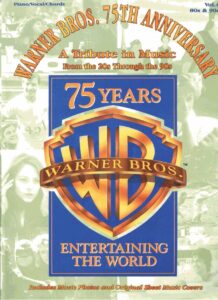 |
75th Anniversary A Tribute In Music From The 20s Through The 90s Various Artists Warner Bros |
| 78 Quarterly No 1 and 2 (1967) Book magazine |
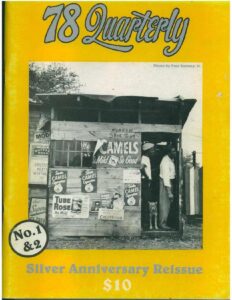 |
|
| 8 ½ Theme (Nino Rota) | ||
| 8 Femmes (Krishna Levy) | ||
| 8 Jazz scales you need to know.mscz | ||
| 80 Most Requested LDS Songs (Mormon music) |
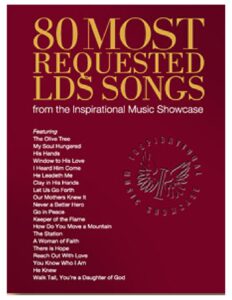 |
80 Most Requested LDS Songs (Mormon music) |
| 88 Piano Classics For Beginners – David Dutkanicz |
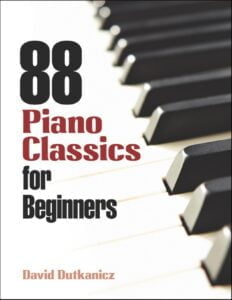 |
88 Piano Classics For Beginners – David Dutkanicz |
| 88 The Giants Of Jazz Piano by Robert L. Foerschuk (Book) foreword by Keith Jarrett |
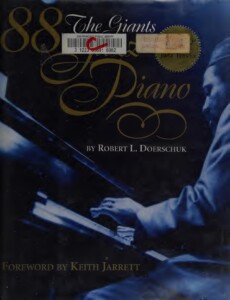 |
|
| 9 easy guitar pieces – Sveinn Eythorsson |
 |
|
| 97 Oeuvres pour Guitare de Jean Francois DELCAMP |
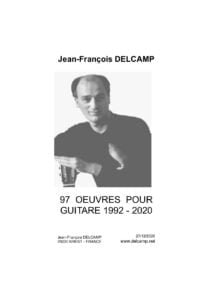 |
97 Oeuvres pour Guitare de Jean Francois DELCAMP |
| 99 Easy Piano Pieces |
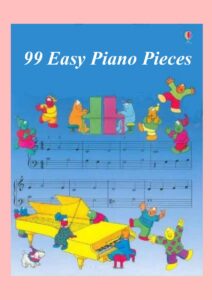 |
99 Easy Piano Pieces |
| A Beautiful Mind – A Kalidoscope of Mathematics |
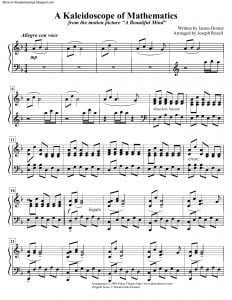 |
|
| A Beautiful Mind – All Love Can Be | A Beautiful Mind – All Love Can Be | |
| A Beautiful Mind – Kalidoscope | ||
| A Child Is Born – Oscar Peterson (Musescore File).mscz | ||
| A Chordal Concept For Jazz Guitar by Peter O’Mara |
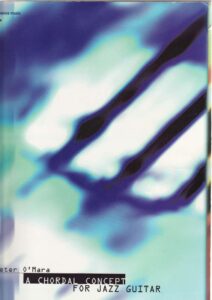 |
A Chordal Concept For Jazz Guitar by Peter O’Mara |
| A Ciascuno il Suo (Luis Bacalov) | ||
| A Clare Benediction – John Rutter – Piano Solo Arr. (Musescore File).mscz | ||
| A Clockwork Orange (Beethoviana) | A Clockwork Orange (Beethoviana) | |
| A Clockwork Orange (Beethoviana) (Musescore File).mscz | ||
| A Comparative Study Of The 24 Preludes Of A. Scriabin And Sergei Rachmaninoff (book) |
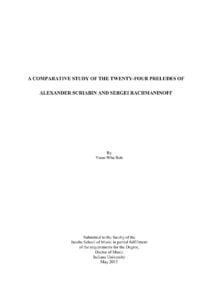 |
|
| A Complete Course of Instruction For The Piano-Forte (Dr Karl Merz) (1885) |
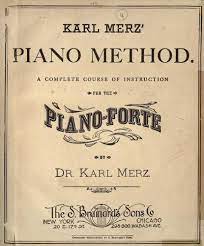 |
Instruction… |
| A Cool Yule. Ten Jazzy Christmas Songs |
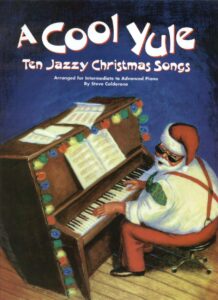 |
A Cool Yule. Ten Jazzy Christmas Songs |
| A Creative Approach To Jazz Piano Harmony Bill Dobbins |
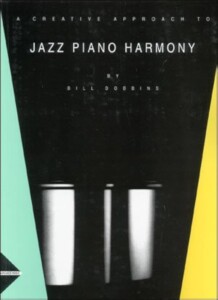 |
A Creative Approach To Jazz Piano Harmony Bill Dobbins |
| A Creative Approach To Practicing JAZZ – by David Baker |
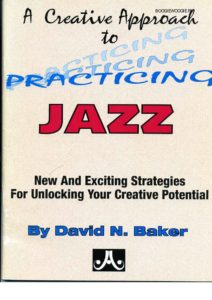 |
A Creative Approach To pravtising Jazz |
Play Jazz Standars – Stella by Starlight (Play Along) Aebersold Vol. 22 Favorite Standars
‘Stella By Starlight’ is arguably one of the most popular jazz standards of all time. This tune is a must for any situation a jazz musician might encounter. This tune was written by Victor Young and was featured in the 1944 movie ‘The Uninvited’.
Ned Washington later wrote the lyrics for it in 1946. It has been recorded and performed by many of the best in jazz and there are plenty of great recordings to listen to. It has been played as a ballad, at medium tempos, and even at fast tempos.
Several of the standards currently performed in the jazz world, they have their origin in old movies and musicals recognized. So is the case with Stella by Starlight, which was composed by Victor Young and presented in 1944 at the
movie The Uninvited.
This ballad was a great success, it became part of the jazz repertoire as one of the most popular standards and as performed in numerous times by the best exponents of this genre.
There is an interpretation in particular that Oscar Peterson presented on his album Blues Étude in 1966, which has
been taken for analysis and comparison in the present investigation.
This post performs a harmonic analysis on the version that appears in the 1944 film and later on Peterson’s arrangement, in order to highlight the characteristics that differentiate one version from another. Prior to the analysis, it is explained different context and approach of each one and finally the elements that uses Peterson to give more contrast, density, complexity and movement to the arrangement.
To name a few examples of the elements mentioned, it stands out the use of tritone substitutions, auxiliary diminished, modulation, superstructures, among others.
Today, many standards lead sheets circulate through the hands of musicians in the world of jazz. These scores can be interpreted in numerous ways: different formats, arrangements, harmonizations, etc.
These variations are given by the individuality of the musician involved in the interpretations, and also by the different currents in the musical periods developed within the Jazz itself. These changes make the musician’s ear be, in many cases, open to listening and experiencing interpretive situations diverse without conditions.
Although this is a positive consequence of the repeated exercise of interpreting works in different ways, it is necessary that the musician always should be aware:
In what ways has it been modified harmonically, a particular arrangement of its original version? For this reason, this work proposes to make a specific harmonic comparison between the original version of a standard and a subsequent arrangement of it (in addition to other elements in general), using as a means the well-known standard, Stella by Starlight.
Firstly, the context and the harmonic structure of its original version will be analyzed, which was composed and performed by Victor Young and his orchestra in1944. Then, the general aspects and the harmonic structure of the version recorded and arranged by pianist Oscar Peterson during the bebop era will be analyzed. Finally, the conclusions of the comparison between both versions.
Original version of Stella by Starlight (1944)
Harmonic analysis
It can be observed that Stella by Starlight appears in the film with an epic introduction of string orchestra and percussion. Little by little it decreases, and the harp gives way to piano for the melody to begin. The piano plays the melody on
two octaves and the violins arrive in part B with a sumptuous crescendo. The chords of the theme are arranged in this way in the key of D Major:

The Harmony begins with an Ab dim. As Felts (2002) explains, this works the same as an X7(b9) which in this case is E7b9, because they both form the same chord, except that they have different roots.
In the second measure, it is resolved deceptively to A7, which can be interpreted as a V7, that is, a primary dominant that resolves indirectly. This resolution leads us to a cadence of II-7/V7 of the IV degree. This V7 is a V7/IV, that is, a dominant as indicated by Ulanowsky (1988), which resolves to an IVmaj7 in the measure four.
Best Sheet Music download from our Library.
It should be noted that from this part of the theme, there is more harmonic movement because there are two chords per measure. After the IVmaj7 appears, a special function dominant: bVII7 that resolves to Imaj7. This is going to be the most common resolutions of a bVII7, since it is a tonic chord (Ulanowsky).
In the second chord of the fifth bar, it is the secondary dominant V7/III, which he will solve in the next one with a III-7. Next, a chord is found ascending diminished (Abdim7) that resolves chromatically by line from bass to a Vmaj7. This pattern is very similar to the one analyzed by Felts and described as “classic” (2002, p.13):


As can be seen in figure 3, the first tritone that is formed from Abdim7 is Ab and D. The second tritone is between Cb and F. Note that the first tritone resolves chromatically by moving contrary to A (root of the next chord and C#, third of that chord). The only difference with the pattern that exposes Felts (2002) in Figure 2, is that the resolution chord is minor.
In the case that Young states, the resolution chord (Amaj7=Vmaj7) is derived from the Lydian mode, by Therefore, there is modal exchange (Ulanowsky, 1988), since the diatonic chord it would be A7 (V7 primary). Precisely, Ulanowsky (1988, pp.40) indicates that ‘the Vmaj7 of modal interchange is difficult to establish because in context it tends to sound as an I chord, that is, tonic”.
It is for this reason that when listening the harmonious development of Stella by Starlight up to this point, the ear can get confused and feel that the real tonic is Amaj7, when in fact it is Dmaj7, that was previously heard in measure five.
The second chord in the seventh compass is again Abdim7 and appears as a step chord to the next one: Gdim7. The latter functions as a descending diminished (bII) because the root resolves by half a tone to the following chord: from Gdim7 to F#7. The F#7 on the beat 8, is a contiguous secondary dominant, which resolves by fourth interval
ascending towards B7 and that is where part B of the song begins.
The first chord of part B is augmented B7, another secondary dominant (V7/II) as indicated by Ulanowsky. It should be noted that that’s where this ballad comes to the most dynamically and harmonically intense part, because the augmented chord has an implicit tension that increases the ear’s expectation of resolution. Its resolution is given directly to E-7 (III-7) and the rhythm is held for one measure harmonic in this section.
Then the bVII7 is resumed and does the same thing again, typical resolution of dominant in special function to Imaj7. At measure 13, it returns to the A section with a variation, so it picks up the first chord of the song, Abdim7. However, this time he resolves to another chord on the beat 14, what Ulanowsky explains (1988, pp.38) occurs: “the III-7b5 (F#-7b5) is a chord of modal interchange, but in general it is more used as a relative II-7 of the V7/II”.
Therefore, F-#7b5 together with the following B7 (V7/II), forms a relative II-7b5/V of II (E-7) and it’s a minor cadence. In bar 15, there is a modal interchange II-V, which comes from the parallel minor key (D minor in this case) and then resolves to D major, that is, to the tonic chord.
It can be concluded that this theme, despite having a simple melody, It has some characteristics that clearly define it. Firstly, it shows more deceptive than direct resolutions. The cadences only solve the chord that is expected twice: from measure three to measure four and from nine to ten. Young then uses several “diminished chords that are common in musical standards from the early to mid-20th century.”
(Felts, 2002, p.12).
Another important aspect is that the tone does not feel clear,
but up to eight bars after the start, because it uses modal interchange, including the confusing Vmaj7 indicated by Ulanowsky (1988).
In addition, there are time changes in the fifth and seventh measures, from 4/4 to 3/4.
Finally, the melody uses the characteristic note twice but “avoided” of the chord. Various authors of jazz books, for example, Levine (1989), explain that F (movable C) in an Ionian mode, is a note that is preferred to be avoided, because it forms a minor second interval with the third of the chord. This exactly happens in the fifth and seventh measures: if the first beat of the melody is played together with its respective chord, the dissonance of the minor second interval mentioned, which in this situation is really one
minor ninth.
Another reason, as Levine points out, is that this F almost always tends to resolve by descending to the third (E) and sounding both notes at the same time produces a strong dissonance. Similarly in melody, F, being a note considered as tense, it is used as a passing note (in weak time) towards another that is distensa (in strong time). Paradoxically, this ‘avoided’ note is the one that it allows us to distinguish one mode from another and that is why it is called a “characteristic”.
Although there is this tension between melody and chord, with F in downbeat strong, Young uses it in such a way that he does not feel uncomfortable in the ear. It is probably because he places it on the first beat of the bar (the most
strong of the four), but on the second beat it descends to the third of the chord. By identifying this melodic resolution, the ear may no longer remain in previously heard dissonance, in such a way that the feeling of tension soon subsides.
Stella by Starlight arrangd by Oscar Peterson (1966)
Notes about Oscar Peterson’s style
In the mid-’40s, Charlie Parker, Dizzy Gillespie and other new virtuoso musicians revolutionized the way jazz was played. This time of innovation is known as the era of bebop. “Bebop tunes were fast and confused, before measures and coherent as it had been until then” (Battes, 2012, p.355).
This style experimented with all kinds of metrics without
limitations. In addition, it required a lot of attention and agility between bass and drums, which are the instruments responsible for pushing the pulse (Battes, 2012).
In 1945, when this ‘new’ jazz had reached its peak, Oscar
Peterson was 20 years old. However, Peterson, unlike other pianists of his age, he wasn’t obsessed with bebop. His musical intuition about jazz was beyond this new stream (Battes).
Since he was twelve years old, he had unconsciously trained his virtuosity and versatility, always having as a goal to be a complete pianist. For this reason, he used the musical vocabulary of that time, but he did it by innovating the execution of jazz on the piano with a very authentic style.
The common thing in the pianists of that time was to emphasize the right hand when accompanied by one or two chords per bar with the left hand. In contrast to this, “(…) Peterson was a two-handed pianist, he played wide, full, harmonically enriched chords and improvised with both
hands” (Battes, 2012, pp.92).
“Peterson wrote arrangements for practically the entire repertoire of his trio. Other trios did it more simply. For example, they began by playing the melody, then the pianist would take a solo, then the others would play short solos and
they played the melody again to finish; but the trio of Oscar Peterson does not.
The themes had more variations in the structures, the interaction between the three instruments was much more complex and detailed (…)” (Battes, 2012, pp.1053). These are the characteristics that particularly stand out in the arrangement of Stella by Starlight, as will be seen in the analysis below.
Harmonic analysis of this arrangement by Oscar Peterson
The analysis will be distributed according to the form of the standard. It will start with the part A and its first eight bars.
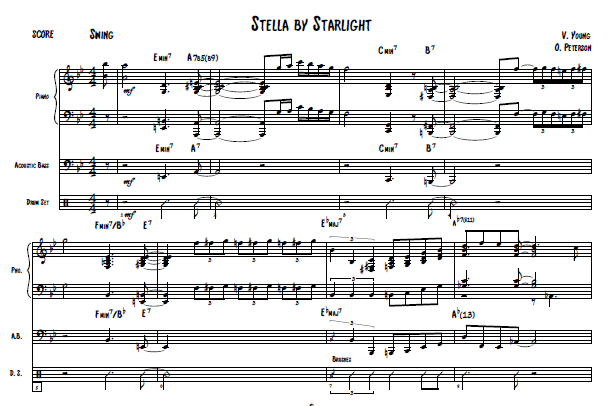
Oscar Peterson’s arrangement is in the key of Bb Major. The harmonic rhythm of the first part, is on average one chord per measure. The first chord is a E-7b5, which can be interpreted as a #IV-7b5, coming from the Lydian mode.
However, as Ulanowsky (1988) explains, it is easier to see it as a relative II/V7 of III-7 (in this case D-7). The chord of the third measure corresponds to a II-7, which is in cadence with tritonal substitution in the dominant (Ulanowsky).
Namely, instead of being a II-7/V7, it’s a II-7 – subV7/I, a disappointing cadence because then continues to an F-7, which is also on cadence with a substitute tritonal (E7), instead of the dominant (Bb7). This cadence resolves directly to the IVmaj7 at bar seven. See the following figure to understand the direction of the chord in bar eight:
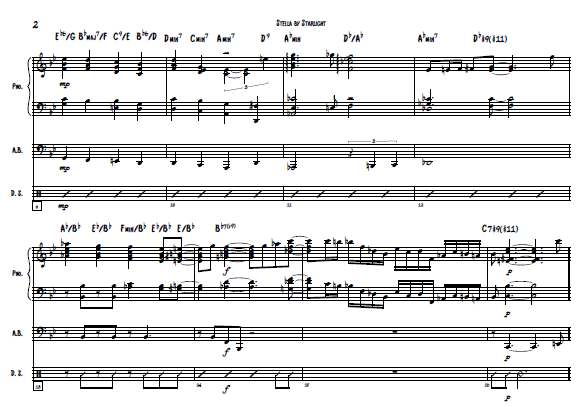
Ab7 (bVII7) is a special function dominant as Ulanowsky explains (1988), which almost always resolves to a tonic chord. At measure nine and ten the harmony happens more vertically than horizontally (Kostka, 2006, pp.46), like the
introduces Peterson in the previous bars. This can be deduced, since the chords that are formed in these measures seem to be the product of a vertical harmonization of the melody, based on the downward movement for second intervals on the bass line. That is, the melody was harmonized, and turned it into the soprano voice of each voicing without altering it and for the bass voice, it was
used notes that in turn are part of chords exposed in different investments.
As a result, there are internal chord voices of the chords, which probably happened more as a consequence of the above mentioned fact, than as exact chords that Peterson would have previously written to connect them with the melody or the bass line. Also, if the harmony is analyzed horizontally in measure nine and ten, you don’t find such consistent functionality between chords.
This way, Peterson managed to clearly distinguish the melody, but at the same time hear a harmonic rhythm of four different chords per measure (a chord for each quarter note of the melody). This is a good example of what Battes
(2012) described as the “full and harmonically enriched chords” characteristic of Peterson.
In the second half of the tenth bar, there is II-7/V7 which does not resolves, but moves on to another II-7/V7, which has modulated in time eleven. However, there is still no clear tonal center where there would be been able to modulate, you only feel a constant harmonic rhythm that has a direction still unknown.
Thus, during measures eleven and twelve the Ab-7/Db7 is repeated and this suggests that it is a cadence that works as a pivot to modulate to Gb Major. However, in the next measure the harmony is observed to go elsewhere
unexpectedly: a series of pedal chords in Bb, using superstructures.
Ulanowsky (1988, pp.43), mentions that ‘a high level of tension and dissonance is acceptable on the pedal, because the pedal creates a strong sense of continuity within a key. In the case of measure thirteen, there is no level tension so high, but the chords that are above the pedal (superstructures), give a very strong sense of movement through the melody, because this is the soprano voice that leads to the chords that are superimposed on the pedal of Bb.
Analyzing each overlap in that measure, you get the first and
second chord, a Bb7sus4. The third becomes a Bb79, the fourth is an Eb/Bb or a Bbsus4. This is just one way to parse it, but if you hear this four-chord movement, you clearly feel that you have modulated to the key Ab Major. The first chord is felt as a tonic after hearing the next one, which is a primary dominant, the subsequent is a VI-, then returns to the dominant (V) and the last (E) although it is a triad, it works (it is checked when hear) as the modal interchange chord bVImaj7, which is derived from the mode Phrygian (Ulanowsky).
bVImaj7 is often used as a substitute for primary dominant and then go to the tonic, as it creates a different feeling of
resolution. Thus, in measure thirteen it feels that in the end it could resolve to the tonic, but he doesn’t, he goes to another secondary dominant (Bb7), which amounts to a
V7/V. Subsequently, Peterson writes a melodic line with high chromaticism and tension that solves in V7/VI, to go to the next section of the topic.
In the part B continues in the key of Ab and there the tonal center becomes more obvious. The C7 in the measure 16 (figure 5), is the dominant of the following F7#5, which in turn is V7/II and resolves to II in measure 19 (see figure 6).

The next chord is the bVII7, dominant of special function, which as indicates Ulanowsky (1989), whenever it resolves to I it is called cadence minor subdominant. In this case, said cadence is presented because it goes directly to I, but the resulting sound is surprising, because it is Io7 and not higher
or less, as would be common.
However, in the next bar it becomes I major, therefore the previous diminished functions only as an ornament. Its use
most frequent is the one just seen in this arrangement: after the occurrence of the diminished chord, stays on the same root and returns to the original, whether it is major or minor.
This pattern has a more static sound, different from the diminished ascending or descending that were analyzed previously. Peterson then wrote a complex melodic section in sixteenth notes, with two voices in the right hand and one in the left, while the bassist plays a complementary ascending melody in eighth notes. They are all natural notes
natural, as all flats and sharps during measure 25 are cancelled.

Edstrom (2005), concludes that the harmony in said measure is Dmin7, since forms a II/V with the following G7, which is much more noticeable by the root and seventh written on the left hand.
Afterwards, a II/V appears relative to the II and between them there is a subV7 of the dominant one, which gives it more harmonic movement. Towards bar 29, the melody returns to the key in which the arrangement began: Bb
elderly.
When returning to the previous key, a primary II-7b5/V7 appears, which is taken from its parallel minor key, and resolves by ascending fourth to the tonic, but the chord is an Io7. After the latter sound, the bass plays a chromatic melody line, the piano imitates it immediately and then the bass repeats it one more time. The harmony feels suspended during this part, however, when the bass pattern ends on Bb at bar 33, you feel a complete resolution even though an Imaj7 chord was never sounded.
This is where our analysis ends, since then follows the improvisation section.
Conclusions
Before drawing conclusions about the harmonic comparison, it is necessary note the differences in how the harmonic rhythm is distributed, the form of the work and how the instrumental format is approached in each version.
Firstly, in the Peterson’s version, both the melody and the harmony are at twice the number of bars, that is, for every bar in the 1944 version, there are two in the 1966. For this
It should be noted that during the swing and bebop era, Stella by Starlight had already become part of the jazz repertoire. So we can see that it has been interpreted in
numerous times by great exponents, for example, Ella Fitzgerald, Anita O’Day, Chet Baker, Miles Davis, Bill Evans, among others.
Therefore, before fixing by Peterson from 1966, there was already a jazz version which is different from the original.
It is obvious that Peterson relied on this to write his arrangement, because it was find several similarities between the two in terms of form, harmonic rhythm, tonality and harmony. For this reason, not all harmonic substitutions seen in chapter two are authored by Peterson.
The jazz version was published decades later in The Real Book along with with other standards in lead sheet form. So you can see how it appears in said book (pp. 408) in figure eight.
Once this clarification has been made, it is possible to continue with the analysis of the structure. From here on, we will say version A to refer to the original ballad and version B for the Peterson arrangement. It can be noticed that in the last A of the way, Peterson added two extra bars (which do not exist in the original, nor in the that appears in The Real Book) to finish his response phrase to the bassist and start improvising on it. In this version, the melody is much more ornate and rhythmically complex, while the original is simpler.
While in the movie is presented as a romantic ballad with a wide orchestra, Stella by Peterson’s Starlight focuses on the swing of jazz and its style, with a much smaller instrument format. It can be finalized as to the harmony, than version B by using more II/V cadences, tritone substitutions, superstructures and modulation, has a more complex harmonic motion than the of version A.

Felts (2002, pp.1384) explains that “composers and arrangers
contemporaries show less interest in diminished chords and tend to reharmonize them by developing new arrangements of older standards. This form can be seen in figure eight, how the jazz players had already reharmonized all the diminished chords typical of version A.
As noted previously, measure one of A starts with Abo7 and in version B, it was changed to a relative II/V of III-7. So too, bar six of version A was replaced by another II/V7 in B, which functions as a transition to modulation what happens later Later, the Go7 of measure eight in A was replaced by a complex melodic line that will resolve in a V7/VI.
Finally, instead of the last diminished chord in bar 13, there is a relative II/V in the B version. In addition, Peterson uses the auxiliary diminished twice: in bar 23 before going to the Imaj7, he delays the resolution by means of this chord and in measure 31 he does it again, with the difference that there is no Bbmaj7 written after this, but aurally it feels like he is.
At bar three and 27, in the B version, tritone substitutions are found with subV7 dominants (written by Peterson) over the II/Vs that come from the prior reharmonization on which this arrangement was based.
Meanwhile, in the same parts of version A there are no II/V mentioned, therefore it does not appear no subV7. Also, just where the 3/4 time signature is located (in twice) in version A, Peterson used superstructures to harmonize the melody.
He first he did it on a descending bass line (G, F, E, D) and more afternoon on a pedal in Bb. In this way, having had more space (he has the twice as many bars) and having reharmonized the melody vertically, version B achieves a sound that attracts attention due to its constant movement and the variety of colors offered.
Finally, he modulated a tone down and thus created an unexpected sound, which it is also subtle in its transition because it does not happen suddenly between a section and another, but was prepared a few bars before part B. The
preparation consisted of using II/V as a pivot towards the pedal in Bb in the measure 13, during which modulation begins. However, the certainty of resolution towards Ab, the new tonic, is most evident in the first bar of part B.
In addition, just six bars before the end, unusually returns to key of Bb in which he had started and does so using a II-7b5 / V7b9 as a pivot, which comes from the minor parallel tonality.
It is concluded that by having a different approach, both version A and B they have unique characteristics that define them. Version B was based on a previous reharmonization that replaced all the diminished chords of the original with various II/V and which has a different harmonic rhythm, because the melody in general continues at the same pace, but the pulse is twice as long so you feel time two and
four own of the swing.
In addition to being harmonically denser from the base, version B, presents elements of bebop and others already mentioned, typical of Peterson’s style that make it very different from the original ballad and demonstrate a high level of complexity and virtuosity.
Meanwhile version A, among others aspects, reveals the great musicality and compositional beauty of Victor Young and located next to the list of his most acclaimed works, which made him one of the best film soundtrack and theme composers, in addition to doing deserving of a posthumous Oscar award (Ulvr, 2012).

Best Sheet Music download from our Library.
References
Batten, J. (2012). Oscar Peterson: The Man and His Jazz. Canada: Tundra Books
Bracket, C. (Productor), & Allen, L. (Director). (Febrero, 1944). The Uninvited.
Estados Unidos: Paramount Pictures.
Davis, R. (1999). Complete Guide to Film Scoring. Boston: Berklee Press.
Edstrom, (2005). The Very Best of Oscar Peterson (pp. 198-200). Milwaukee: Hall Leonard
Felts, R. (2002). Reharmonization Techniques. Boston: Berklee Press.
Kostka, S. (2006). The Vertical Dimension. Materials and Techniques of Twentieth-Century Music (pp.46-55). Pearson Prentice Hall.
Levine, M. (1989). The Jazz Piano Book. California: Sher Music Co.
Snelson, T. (2011, Febrero). The Ghost in the Machine. Media History, 17, 17-32.
The Real Book. Vol. 1. 5ta Edición. Milwaukee: Hal Leonard Corporation.
Ulanowsky, A. (1988). Harmony 4. Boston: Berklee College of Music
Ulvr, M. (2012). Victor Young’s Fan Web: The Unofficial Composer’s Web Site.
Young, V. (1944). Stella by Starlight, in Blues Étude.
(EP). Chicago, Chicago Sound Studios (1966).
Browse in the Library:
| Artist or Composer / Score name | Cover | List of Contents |
|---|---|---|
| Willie Fugal S Blues Piano transcription |
 |
|
| Willie Nelson – Always on My Mind Sheet Music |
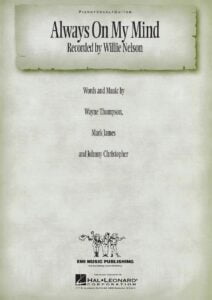 |
|
| Willie Nelson – On My Mind | ||
| Willie The Lion Smith – Finger Buster transcription |
 |
|
| Willie The Lion Smith Echo of Spring transcription |
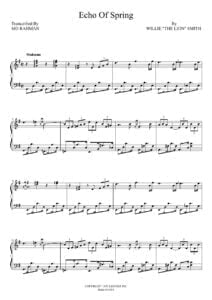 |
|
| Willie The Lion Smith Rippling Waters | Willie The Lion Smith Rippling Waters | |
| Willow Weep For Me Words And Music By Ann Ronell 1932 Jazz Standard (Vintage sheet music) |
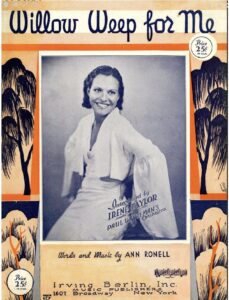 |
|
| Wim Mertens – American Minimal Music La Monte Young Terry Riley Steve Reich Philip Glass |
 |
Book La Monte Young Terry Riley Steve Reich Philip Glass |
| Wim Mertens – Close Cover | Wim Mertens – Close Cover | |
| Wim Mertens – Struggle For Pleasure | Wim Mertens – Struggle For Pleasure | |
| Wim Mertens – Time Passing |
 |
|
| Wim Mertens Humility |
 |
|
| Wim Mertens Lir |
 |
|
| Windham Hill piano sampler |
 |
Windham Hill piano sampler |
| Windy Whistle (Le Renard et l’Enfant OST) Alice Lewis | ||
| Wings (McCartney) – Greatest Hits |
 |
Wings sheet music |
| Winifred Atwell Album Of Rags No 1 Original arrangements Vintage songbook |
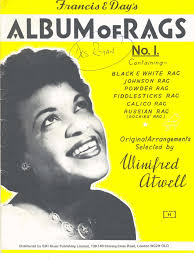 |
Winifred Atwell Album Of Rags No 1 Original arrangements Vintage songbook |
| Winifred Atwell Marguerite Monnot The Poor People Of Paris ( La Goualante Du Pauvre Jean) Piano Solo |
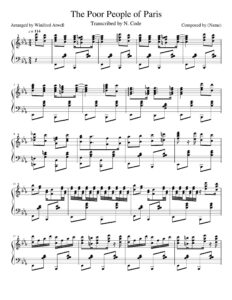 |
|
| Winnie The Pooh The Honey Tree Sheet Music (Disney) |
 |
Winnie The Pooh The Honey Tree Sheet Music (Disney) |
| Winter Sonata O.S.T. (Ryu) | ||
| Winter Wonderland Other Christmas Favorites Songbook Piano Vocal guitar Chords |
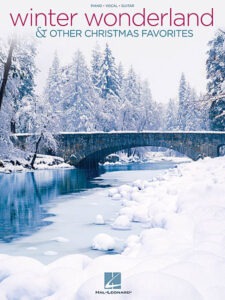 |
Winter Wonderland and Other Christmas Favorites Songbook Piano Vocal guitar Chords |
| Wish You Were Here – Pink Floyd (Musescore File).mscz | ||
| Within Temptation – Our Solemn Hour | ||
| Without you (Maria Carey) | ||
| Without You (Mariah Carey Piano Arr ) (Musescore File).mscz | ||
| Wiz Khalifa & Charlie Puth See You Again (Solo Piano) |
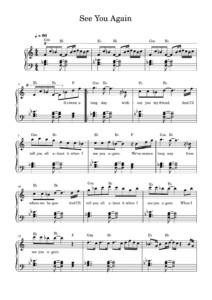 |
|
| Wolf Wagner Paraphrase Über Die Walküre |
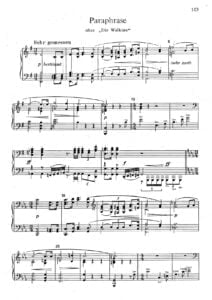 |
|
| Wolfe Richard Legit Professional Fake Book More Than 1010 Songs |
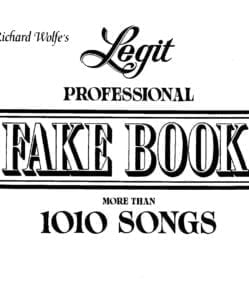 |
Wolfe Richard Legit Professional Fake Book More Than 1010 Songs |
| Wolfenzon – Stücke für Klavier | Wolfenzon – Stücke für Klavier | |
| Womack, Bobby – Midnight Mover My Autobiography The True Story of the Greatest Soul Singer in the World (Book) |
 |
|
| Woman in love (Barbra Streisand) | ||
| Women Of Pop Rock Songbook Twenty-Two Hot Hits for Easy Piano |
 |
Women Of Pop Rock Songbook Twenty-Two Hot Hits for Easy Piano |
| Wonderful Christmastime -Paul Mccartney (Wings) (Musescore File).mscz | ||
| Wonderful Life – Black (Easy Piano Solo Sheet Music) (Musescore File).mscz | ||
| Woody Allen – A propósito de nada (autobiografía)(2020) |
 |
|
| Woody Allen – Apropos of Nothing (2020) Autobiography | Woody Allen – Apropos of Nothing-Simon and Schuster (2020) Cover | |
| Woody Guthrie This Land Is Your Land (Easy and Intermediate Piano Solo) |
 |
|
| World Hits Of Jazz Standard |
 |
World Hits Of Jazz Standard |
| Wuthering Heights (Ryuichi Sakamoto) | ||
| Wynton Kelly – Autumn Leaves Solo transcription | Wynton Kelly – Autumn Leaves Solo transcription | |
| Wynton Kelly – Dark Eyes Solo Piano transcription |
 |
|
| Wynton Kelly – Dark Eyes Solo Piano Transcription (Musescore File).mscz | ||
| Wynton Kelly – Full transcriptions | Wynton Kelly – Full transcriptions | |
| Wynton Kelly – I Dig of You Solo transcription |
 |
|
| Wynton Kelly – If I should Love You Solo transcription |
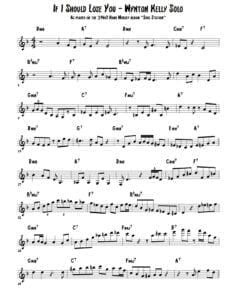 |
|
| Wynton Kelly – Jazz Piano Collection |
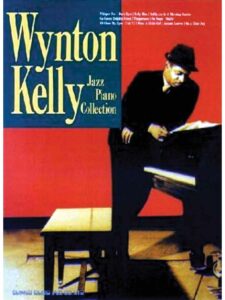 |
Wynton Kelly Piano Collection- |
| Wynton Kelly – Someday my prince will come (Piano solo) |
 |
|
| Wynton Kelly Dark Eyes Transcription | Wynton Kelly Dark Eyes Transcription | |
| Wynton Marsalis Trumpet Genius Gourse, Leslie (Book) |
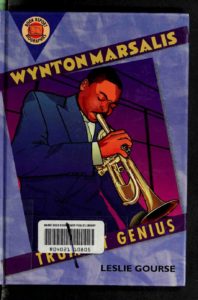 |
|
| Wynton Marsalis – Caravan (Solo) |
 |
|
| Wynton Marsalis – Darn That Dream (Solo) | Wynton Marsalis – Darn That Dream (Solo) | |
| Wynton Marsalis – Dealfayos Dillema (Solo) |
 |
|
| Wynton Marsalis – Standards (sheet music transcriptions) |
 |
Wynton Marsales – Standards (sheet music transcriptions) |
| Wynton Marsalis In The Court Of King Oliver (Trumpet and rhythm section) |
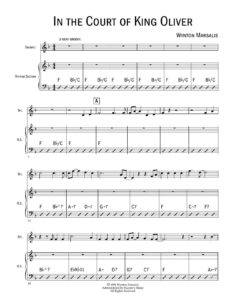 |
|
| Wynton Marsalis Omnibook For B Flat Instruments Transcribed exactly from his recorded solos |
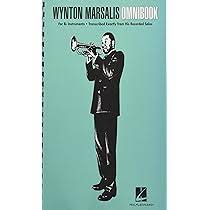 |
Wynton Marsalis Omnibook For B Flat Instruments Transcribed exactly from his recorded solos |
| Wynton Marsalis Struttin’ With Some Barbeque (Live) Wynton Marsalis’ Trumpet Solo |
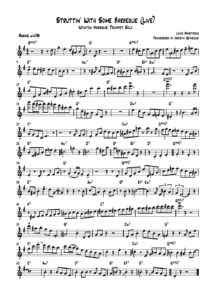 |
|
| Xenoblade Chronicles 2 Loneliness Kenji Hiramatsu | Xenoblade Chronicles Opening Theme Game sheet music | |
| Xenoblade Chronicles Opening Theme Game sheet music Yoko Shimomura |
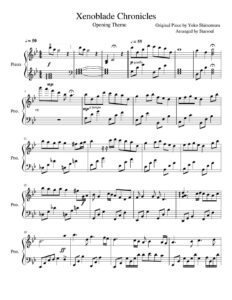 |
|
| Yamaha E443 Songbook digital keyboard PSR-E443 |
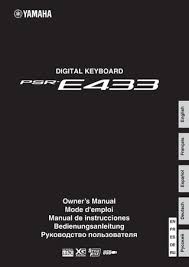 |
|
| Yamaha Keyboard Songbook |
 |
Yamaha Keyboard Songbook |
| Yamaha Keyboard Songbook Song-Buch |
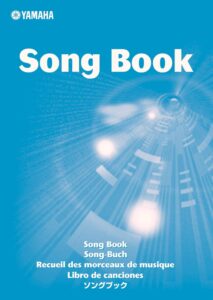 |
|
| Yamaha PSR E373 YPT-370 PSR-EW310 Song book |
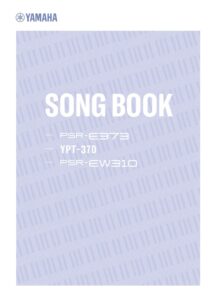 |
|
| Yamaha Song Book |
 |
Yamaha Song Book |
| Yamaha Song book |
 |
Yamaha Songbook |
| Yamaha Songbook |
 |
Yamaha-Songbook |
| Yamaha songbook 50 Piano Greats for the piano (Yamaha collection) |
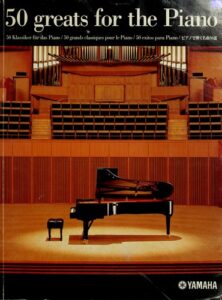 |
50 Piano Greats for the piano (Yamaha collection) |
| Yamaha Songbook Contemporary Vol. 1 |
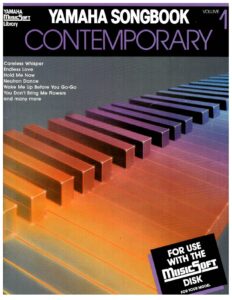 |
Yamaha Songbook Contemporary Vol. 1 |
| Yana Bobalik Mysterious Music Я.Бобалік Songbook |
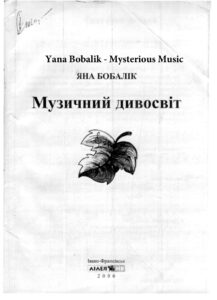 |
|
| Yana Bobalik Secret Music From Mysterious Music Я.Бобалік Таемна Музыка |
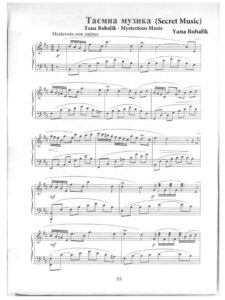 |
|
| Yann Tiersen Rue des Cascades (sheet music) | yann tiersen cascades sheet-music | |
| Yann Tiersen Mother’s Journey |
 |
|
| Yann Tiersen – Tabarly Sheet Music |
 |
|
| Yann Tiersen – Comptine Dun Autre ete | ||
| Yann Tiersen – La Dispute – Amelie Poulain | ||
| Yann Tiersen – La Valse d’Amelie Poulain | Yann Tiersen – La Valse Damelie | |
| Yann Tiersen – Le moulin – Amelie Poulain | Le Moulin – Amelie Poulain | |
| Yann Tiersen – Six pièces pour piano – Volume 2 – Amélie Poulain |
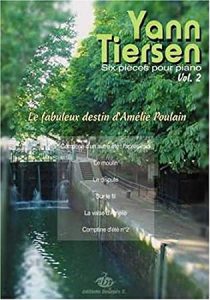 |
Yann Tiersen – Six pieces pour piano – Volume 2 – Music Sheet |
| Yann Tiersen – Summer 78 | ||
| Yann Tiersen – Sur Le Fil |
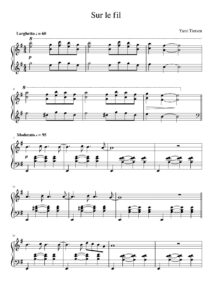 |
|
| Yann Tiersen – Pièces pour piano vol 1 et 2 + divers |
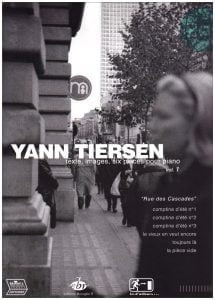 |
Yann Tiersen – pièces pour piano vol 1 et 2 + divers  |
| Yann Tiersen Eusa 2015 Songbook |
 |
|
| Yann Tiersen J’Y Suis Jamais Alle piano solo (Amélie) |
 |
|
| Yann Tiersen Onze Pièces Pour Piano |
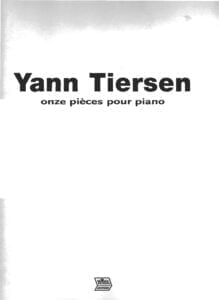 |
Yann Tiersen Onze Pièces Pour Piano |
| Yann Tiersen Partitions intégrales Piano Works 1993-2004 | Yann Tiersen Partitions intégrales Piano Works 1993-2004 | |
| Yann Tiersen Tabarly Complete Book For Piano |
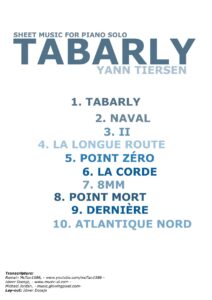 |
|
| Yanni In My Time (Piano Solos) Sheet Music |
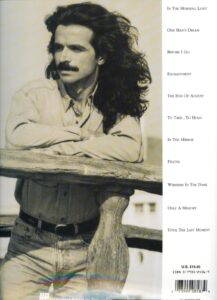 |
Yanni In my time piano solos |
| Yanni One Man’s Dream |
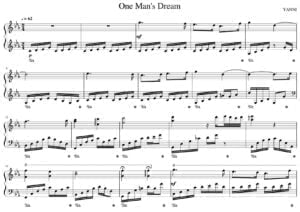 |
|
| Yanni – Per Piano (Piano book) |
 |
Yanni – Per Piano |
| Yanni – In The Morning Light | ||
| Yanni – Nostalgia | ||
| Yanni – One Man’s Dream (Musescore File).mscz | ||
| Yanni -The Best of |
 |
 |
| Yanni Ethnicity Book |
 |
Yanni Ethnicity Book |
| Yaron Herman – Hallelujah (Leonard Cohen) transcription |
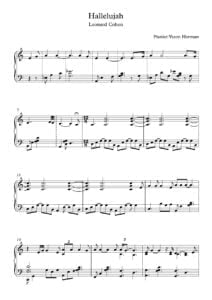 |
|
| Yashal (Elisa) | ||
| Yasuharu Takanashi – Naruto Shippuden OST – Loneliness |
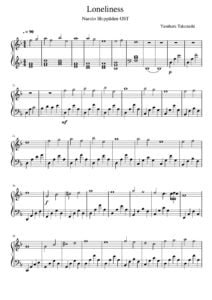 |
|
| Yedidia, Ronn Piano Sonata No 3 outcries (manuscrit) |
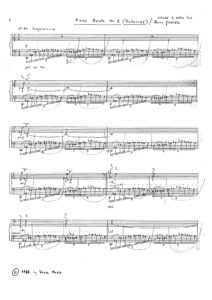 |
|
| Yehezkel Raz Ballerina Piano Solo sheet music |
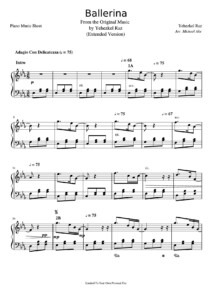 |
|
| YES Fragile |
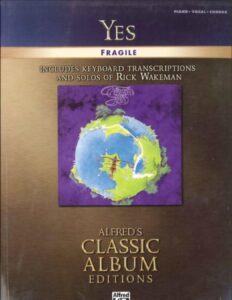 |
YES Fragile |
| YES – Complete Deluxe Edition |
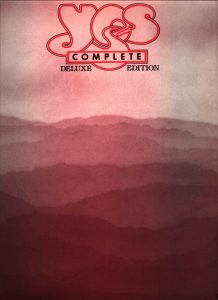 |
YES – Complete Deluxe Edition |
| Yes Close To The Edge The Story Of Yes (Book) |
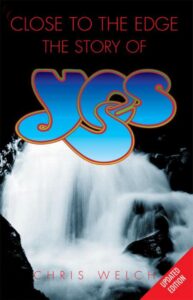 |
|
| Yes The Best Of Guitar Songbook with TABs |
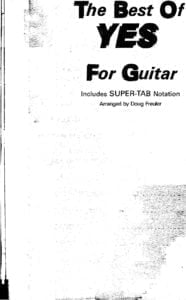 |
Yes The Best Of Guitar Songbook |
| Yesterday Piano Cello – Piano Sheet Music – Paul McCartney |
 |
|
| Yesterday Piano vocal guitar Songbook Featuring Music From the OST |
 |
|
| Yesterday The Beatles For Jazz Piano (Musescore File).mscz | ||
| Yesterday when I was young (Charles Aznavour) | ||
| Yimkin Law ( Et maintenant on va où OST) Racha Rizk | ||
| Yiruma – 27 May | ||
| Yiruma – Destiny Of Love | ||
| Yiruma – Dream | ||
| Yiruma – Dream A Little Dream Of Me | Yiruma – Dream A Little Dream Of Me | |
| Yiruma – Falling | ||
| Yiruma – First Love – River Flows In You | Yiruma – First Love – River Flows In You | |
| Yiruma – Gabriel | ||
| Yiruma – Kiss the Rain | Yiruma Kiss the rain | |
| Yiruma – Kiss The Rain (Musescore File).mscz | ||
| Yiruma – Love Me | ||
| Yiruma – Maybe | ||
| Yiruma – Mikas Song | ||
| Yiruma – One Day I Will |
Please, subscribe to our Library.
If you are already a subscriber, please, check our NEW SCORES’ page every month for new sheet music. THANK YOU!
